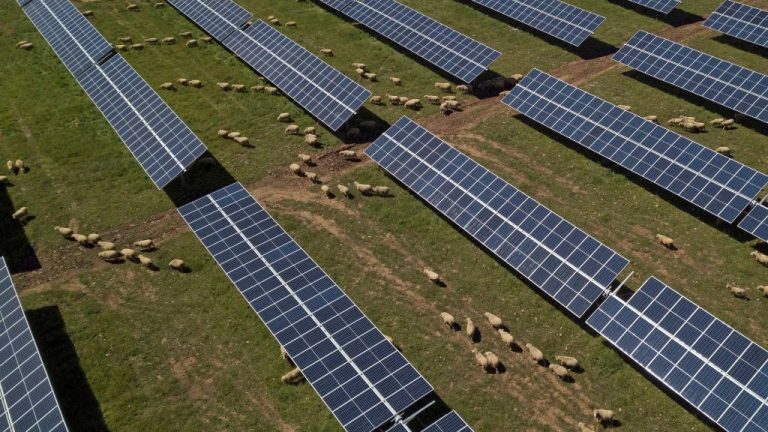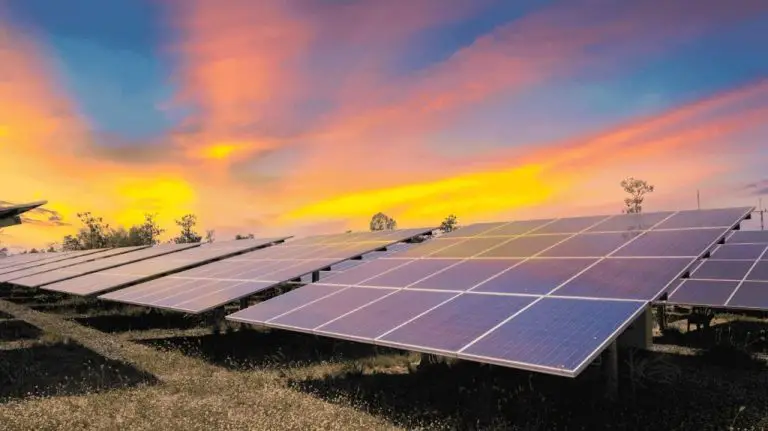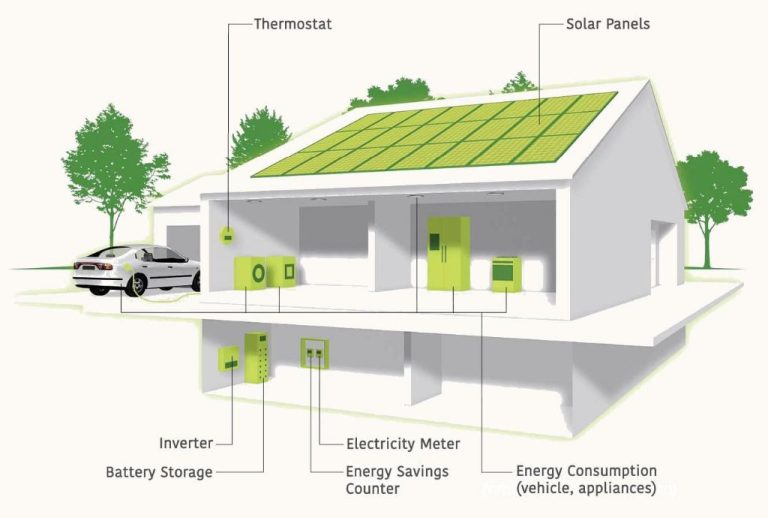Is Solar A 50 State Market?
The solar energy industry in the United States has experienced explosive growth over the past decade. According to the Solar Energy Industries Association (SEIA), total installed solar capacity in the U.S. has grown more than
50x from 1.2 gigawatts in 2008 to over 113 gigawatts at the end of 2021 (link: SEIA Solar Industry Research Data). With costs continuing to fall and favorable policies being enacted, solar adoption is accelerating across all 50 states. But how much potential does solar have to power the entire country? This article examines the current state of solar energy nationwide and explores whether solar can become a true 50 state market.
Current State of the Solar Market
The solar market has grown significantly in the United States over the past decade. As of 2012, there were several states that had strong, established solar markets, while many other states were still emerging. According to IRECSolarMarketTrends-2012-Web-8-28-12.pdf, the states with the highest number of cumulative solar installations in 2012 included California, New Jersey, Arizona, New Mexico, Colorado, Pennsylvania, and North Carolina. The leading states accounted for over 80% of the total U.S. solar market in 2012. However, the number of states with growing solar markets was on the rise.
Solar Potential by Region
The potential to generate solar energy varies greatly across different regions of the United States. According to data from the National Renewable Energy Laboratory, the Southwest has the highest solar potential due to its abundant sunshine and clear skies (Solar Energy Potential by Region, 2021). States like Nevada, California, Utah, New Mexico, and Arizona make up the top 5 in terms of average annual solar radiation. The cold and overcast conditions in parts of the Pacific Northwest, Midwest, and Northeast result in far lower solar potential compared to the sunny Southwest. However, even some northern states like Nebraska have decent solar resources, ranking 13th nationally for solar power potential (Comparison of Solar Power Potential by State, 2010). Advances in solar panel technology are also making solar more viable across a wider range of climates and regions.
Top Solar States
When it comes to solar power in the United States, some states have emerged as leaders in deployment and generation capacity. According to the Solar Energy Industries Association (SEIA), the top 5 states for solar are:
- California – With over 30,000 megawatts (MW) of installed solar capacity, California leads the nation by a wide margin. The state has abundant sunshine, high electricity prices, and strong policy incentives that have driven rapid growth of rooftop and utility-scale solar installations.1
- Florida – Florida has emerged as a major solar state, with over 5,000 MW of solar capacity. The state benefits from plentiful sunshine and declining installation costs. Supportive net metering policies have spurred the growth of rooftop solar.
- Texas – Texas now ranks 3rd for solar installations, with over 5,000 MW of capacity. Competitive electricity markets and ample solar resources make the state favorable for large-scale solar farms.
- North Carolina – North Carolina has over 4,000 MW of solar capacity, mostly from utility-scale projects. Renewable portfolio standards helped drive early growth, while declining costs have sustained the solar boom.
- Arizona – With over 3,800 MW of solar deployed, Arizona benefits from southwest sunshine and supportive policies.Rooftop solar adoption has been particularly strong in the state.
While these states currently lead in total solar installations, a closer analysis shows even broader potential for solar across the nation.

Emerging Solar States
Several states across the U.S. are emerging as new hotspots for solar energy growth and adoption. According to a report from Wood Mackenzie and the Solar Energy Industries Association (SEIA), some of the fastest growing and most promising solar states include South Carolina, Florida, Texas, New Mexico, Nevada, Utah and Colorado.
Many of these emerging solar states are experiencing rapid growth due to favorable policies, ample solar resources and declining costs. For example, South Carolina has seen its solar capacity expand from virtually nothing in 2014 to over 1,800 MW today. This growth, similar to other emerging solar states, was attributable to state incentives for residential and commercial solar, the growing popularity of third-party leases offered by companies like SunRun and declining solar costs in general.
Emerging solar states still have immense untapped potential for solar energy growth across the residential, commercial and utility sectors. As costs continue to fall and supportive policies remain in place, these states are poised to join the ranks of solar leaders in the coming years. The abundant solar resources in the Sunbelt region make emerging solar states an area of major opportunity.
Obstacles to Solar
While solar energy shows enormous promise, expanding access to solar across all 50 states faces some key obstacles. One major barrier is the upfront cost of purchasing and installing solar panels, which requires significant initial investment. According to the Union of Concerned Scientists, the capital costs of building renewable energy remain higher than for conventional power plants.
Another challenge is integrating solar into existing energy grids, especially as solar provides an intermittent source of energy that fluctuates based on weather conditions and time of day. There are concerns that high levels of solar penetration could destabilize the grid if the utility infrastructure is not properly adapted.
Supply chain issues pose additional constraints, from shortages of polysilicon to lack of trained personnel to install and maintain solar systems. Building out solar manufacturing and training qualified workers will be critical to scale up the industry.
Political opposition also persists in certain regions against renewable energy adoption. Fossil fuel lobbying and lack of regulatory incentives in some states hinder the growth of solar. Streamlining solar permitting processes could help reduce soft costs.
Solutions and Policy
Several policy changes and incentives at the federal and state level could help drive solar growth in all 50 states. The federal Solar Investment Tax Credit (ITC) offers a 26% tax credit for systems installed in 2020-2022, and 22% for systems installed in 2023 (SEIA). This tax credit has already spurred solar adoption nationwide, but an extension with a gradual phase-out could provide continuity for the industry. Net metering policies, which allow solar customers to get credit for excess energy sent back to the grid, are another important incentive – currently 44 states have a net metering policy (EPA).
At the state level, strong renewable portfolio standards (RPS) that mandate utilities to get a certain percentage of energy from renewable sources can be highly effective. Top solar states like California, New Jersey, and Massachusetts have implemented aggressive RPS targets. Streamlining solar permitting and interconnection processes can also reduce soft costs for rooftop solar installations. Bulk purchasing programs like Solarize Connecticut that facilitate community solar projects are another emerging solution (EPA).
Federal and state governments should continue working together to enact policy solutions that make solar energy affordable and accessible in all 50 states.
The Path Forward
While solar has seen tremendous growth over the past decade, there is still significant potential for further expansion and making solar a true 50 state market. According to the Solar Energy Industries Association (SEIA), solar currently accounts for just 4% of U.S. electricity generation, but SEIA projects that percentage could grow to 30% by 2030. Key factors driving continued growth include (https://www.seia.org/solar-industry-research-data):
– Falling costs – The cost to install solar has dropped by more than 70% over the last decade, making it increasingly competitive with conventional energy sources.
– Supportive policies – Federal and state incentives like the solar investment tax credit (ITC) and net metering have fueled growth and are critical to continued expansion.
– Corporations and utilities investing in solar – Major companies are procuring record amounts of solar energy while utilities are developing large solar farms to meet rising demand.
For solar to achieve its potential as a true 50 state market, growth will need to accelerate in states that have lagged behind solar leaders like California and Florida. States with ample solar resources but underdeveloped markets, such as Texas, Louisiana, Mississippi, and Alabama, represent a massive opportunity according to Deloitte (https://www2.deloitte.com/us/en/pages/energy-and-resources/articles/us-solar-power-growth-through-2040.html). Realizing that opportunity will require overcoming policy barriers and enabling frameworks that incentivize solar adoption. With focused efforts to make solar accessible and affordable nationwide, projections indicate solar has the potential to become a dominant electricity source across the entire U.S. within the next two decades.
Call to Action
There are several ways readers can help support the expansion of solar energy across the United States:
Contact your elected representatives to voice support for pro-solar policies and incentives. Increased government support through tax credits, rebates, and renewable energy standards can accelerate solar adoption nationwide. Visit energy.gov to find contact information for your representatives and sample messages you can use.
If you are a homeowner, consider installing solar panels on your roof. With federal and state incentives, going solar is more affordable than ever. Use the Department of Energy’s Homeowner’s Guide to Going Solar to evaluate your options.
Support community solar projects in your area. Community solar allows households to share the benefits of a large solar installation. Call your utility provider to ask about subscribing to an existing or upcoming community solar project.
Join a solar advocacy organization such as the Solar Energy Industries Association. You can stay updated on the latest policy developments and lend your voice to pro-solar initiatives.
Talk to your family, friends and neighbors about the benefits of solar energy. Word of mouth helps drive adoption. Share your experience if you have solar panels installed.
There are many ways we can work together to realize solar energy’s potential to power homes across America. Our voices and actions can make a real difference in accelerating the clean energy transition.
Conclusion
In closing, we have looked at the current state of solar energy across the 50 states. While solar has seen tremendous growth in leading states like California, there is still untapped potential in many parts of the country. Emerging solar markets, especially across the Southeast, Midwest and Northwest, are poised for expansion with the right policies and investments in place.
With solar costs continuing to fall and new financing options available, solar can scale in every state. Supportive policies like renewable portfolio standards, net metering and tax incentives are crucial to accelerate deployment. As solar penetrates deeper into the electricity mix, it will bring greater energy independence, reliability, affordability and sustainability.
The future is bright for solar to power homes, businesses and communities nationwide. With smart policies and public and private initiatives, solar can reach its potential as a true 50 state market that provides clean, affordable energy to all Americans.






